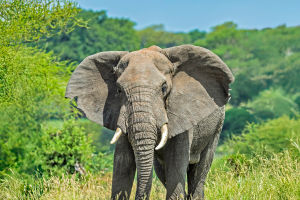Stepping into a desert on a hot afternoon, the heat seems unbearable. Yet, this harsh landscape is home to countless animals that not only survive but thrive.
From scorching days to freezing nights, desert dwellers have evolved amazing strategies to handle extreme temperatures, scarce water, and sparse food. Their survival skills reveal nature's incredible ingenuity.
1. Efficient Water Use
Water is a precious resource in the desert. Many animals get most of their hydration from the food they eat. Kangaroo rats, for example, rarely drink water at all—they extract moisture from seeds and plants. Camels store blubber in their humps, which can be converted into water and energy when needed. Reptiles like desert lizards absorb water through their skin or from morning dew. These adaptations ensure survival even when liquid water is scarce.
2. Temperature Regulation
Desert animals face extreme temperature swings, from blistering daytime heat to chilly nights. To cope, many are nocturnal, becoming active at night when temperatures drop. Foxes, such as the fennec fox, have large ears that release heat, keeping their bodies cool during the day. Some animals burrow underground to escape the sun, where temperatures remain more stable. Others, like desert tortoises, retreat into burrows or shade to avoid overheating.
3. Specialized Body Features
Many desert animals have unique physical traits that help them survive. Camels' thick eyelashes and closable nostrils protect them from sandstorms, while reflective fur or scales reduce heat absorption. Some insects have shiny exoskeletons that reflect sunlight, and desert snakes can lift their bodies off hot sand to minimize contact. These features are often subtle but crucial for enduring extreme conditions.
4. Food Adaptations
Food can be scarce in deserts, so animals have developed clever ways to find and store it. Squirrels and rodents often hoard seeds in underground caches, while birds like roadrunners hunt small reptiles and insects. Predators, including desert snakes and hawks, are patient hunters, using camouflage and stealth to catch prey. Even scavengers, such as certain beetles, can thrive by finding leftovers in harsh environments.
5. Camouflage and Protection
Blending in with the environment is essential for desert survival. Many animals have skin, fur, or scales that match the sandy or rocky surroundings. This camouflage helps them avoid predators and approach prey unnoticed. For example, horned lizards flatten against the ground to look like stones, while snakes use patterned skin to blend into desert terrain. Defense mechanisms, like spines or venom, further increase survival chances.
6. Behavioral Adaptations
Behavior is as important as physical features. Many animals adjust their activity patterns to the environment. Some lizards bask in the morning sun to warm up and retreat during midday heat. Nocturnal creatures, like owls and rodents, take advantage of cooler nights to hunt and forage. Burrowing, climbing, or hiding under rocks provides shelter, reduces exposure, and conserves energy.
Lessons from Desert Survival
Studying desert animals teaches us how life adapts to extreme conditions. Efficient water use, temperature control, physical adaptations, and smart behaviors all work together for survival. Observing these strategies highlights resilience, resourcefulness, and balance in nature.
1. Conserve water: animals find or store moisture creatively.
2. Stay cool: timing and behavior help avoid overheating.
3. Adapt physically: features like fur, scales, or blubber stores reduce stress.
Reflection on Desert Life
Deserts may seem inhospitable, but they are full of life that thrives against the odds. The ingenuity of these animals—from kangaroo rats to camels and lizards—shows how adaptation shapes survival. Next time you imagine a desert, think beyond the sand and heat and picture the clever creatures quietly navigating this extreme world, demonstrating resilience and creativity every day.


